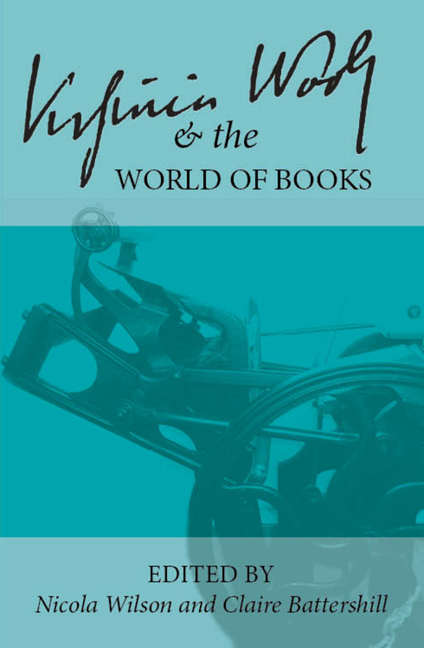 Virginia Woolf and the World of Books
Virginia Woolf and the World of Books Book contents
- Frontmatter
- Contents
- Introduction
- List of Abbreviations
- Keynote
- In the Archives
- Craftsmanship
- The Hogarth Press
- Hours in A Library
- The Art of the Book
- The Art of the Narrative
- Woolf as a Model Builder: Complex Form in the “Ode to Cutbush”
- “Books Were Not in Their Line”: The Material Book and the Deceptive Scene of Reading in To the Lighthouse
- Mrs. Brown and the Trojan Cow: Deconstructing Aristotle in “An Unwritten Novel”
- Making New Books: Creative Approaches
- The Book in the World: Woolf's Global Reception
- Editing and Teaching Woolf
- Intertextuality
- Lives in Writing
- Notes on Contributors
“Books Were Not in Their Line”: The Material Book and the Deceptive Scene of Reading in To the Lighthouse
from The Art of the Narrative
- Frontmatter
- Contents
- Introduction
- List of Abbreviations
- Keynote
- In the Archives
- Craftsmanship
- The Hogarth Press
- Hours in A Library
- The Art of the Book
- The Art of the Narrative
- Woolf as a Model Builder: Complex Form in the “Ode to Cutbush”
- “Books Were Not in Their Line”: The Material Book and the Deceptive Scene of Reading in To the Lighthouse
- Mrs. Brown and the Trojan Cow: Deconstructing Aristotle in “An Unwritten Novel”
- Making New Books: Creative Approaches
- The Book in the World: Woolf's Global Reception
- Editing and Teaching Woolf
- Intertextuality
- Lives in Writing
- Notes on Contributors
Summary
Reading—or at least the appearance of reading—is everywhere in To the Lighthouse. The essential power and multiform nature of the scene of reading are evident from the transformations played upon its first appearance in the text: Mrs Ramsay's reading a fairy tale to James. As Mr Ramsay strolls up and observes this tableau, he finds the image iconic and compelling; in short order, he moves over and stands in front of them, displaying his need of sympathy, jealous of the attention given to his son. James, in his turn, tries to use the book to divert the man it had just summoned: “By looking fixedly at the page, he hoped to make him move on; by pointing his finger at a word, he hoped to recall his mother's attention, which, he knew angrily, wavered instantly his father stopped” (37).
But the scene of reading has more power to attract than to repel. James’ stratagem fails, as he suspected it would; Mrs Ramsay ignores him to satisfy her husband's needs. The tropes used to depict this interaction are revealing: after listening to his wife's words of encouragement, Ramsay is described as being “filled with her words, as a child who drops off satisfied” (38). For Mrs Ramsay, this is a much more arduous task than anyone realizes: “the whole fabric fell in exhaustion upon itself, so that she had only strength enough to move her finger, in exquisite abandonment to exhaustion, along the page of Grimm's fairy story” (38).
And what is the story being read to James? It is a misogynistic fairy tale, “The Fisherman and his Wife,” which Jane Marcus has called a sexist parable of “woman's insatiable desire for power” (1987: 154). This odd choice of inner text has occasioned considerable speculation and contradictory responses in the critical literature; it is all the more curious since Woolf chose it to replace other, less offensive fairy tales (“The Three Dwarfs” and “The Three Bears”) in her earlier manuscript. Beth Rigel Daugherty views Mrs Ramsay as one who has been destroyed by the narratives of the patriarchy; her fate is that which Lily must struggle to avoid: “through her use of the fairy tale and the Angel of the house, Woolf shows the implication of patriarchal myths for women— they kill” (1991: 302).
- Type
- Chapter
- Information
- Virginia Woolf and the World of BooksSelected Papers from the Twenty-seventh Annual International Conference on Virginia Woolf, pp. 149 - 154Publisher: Liverpool University PressPrint publication year: 2018
